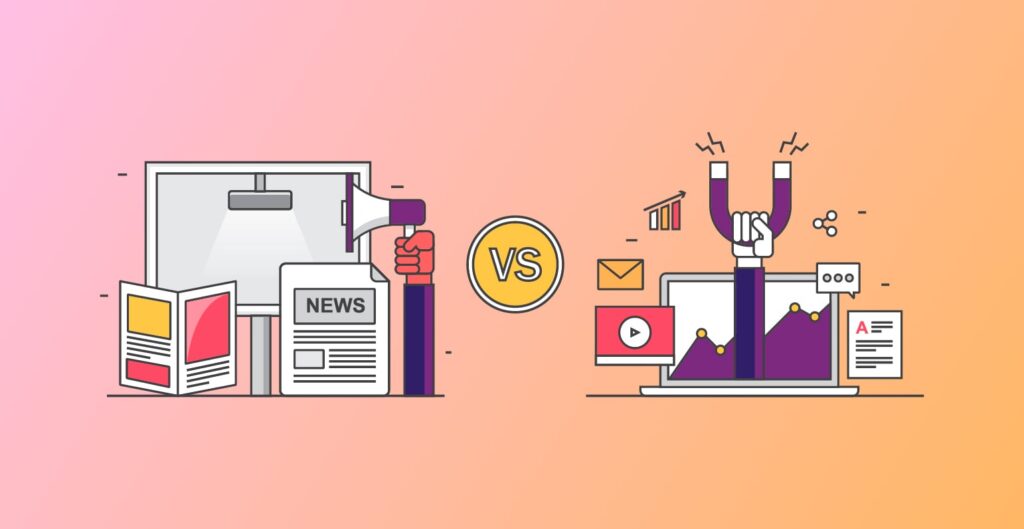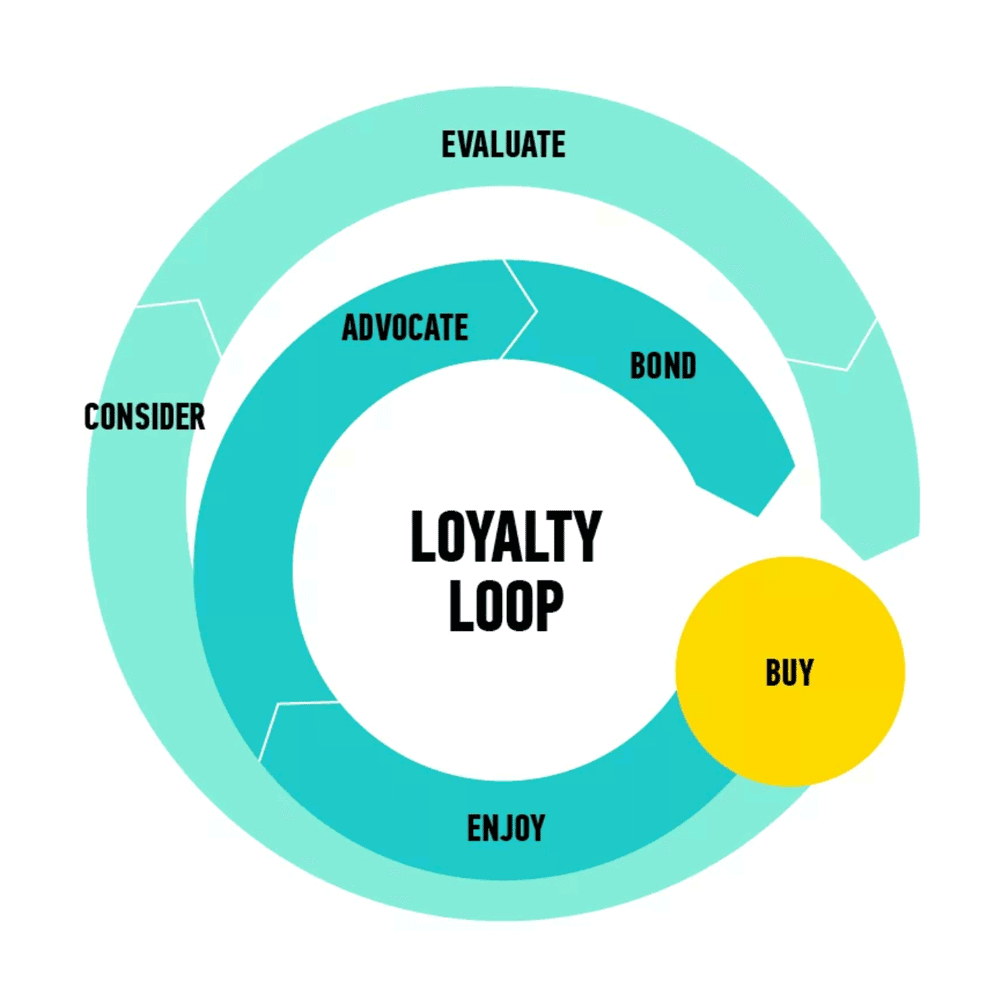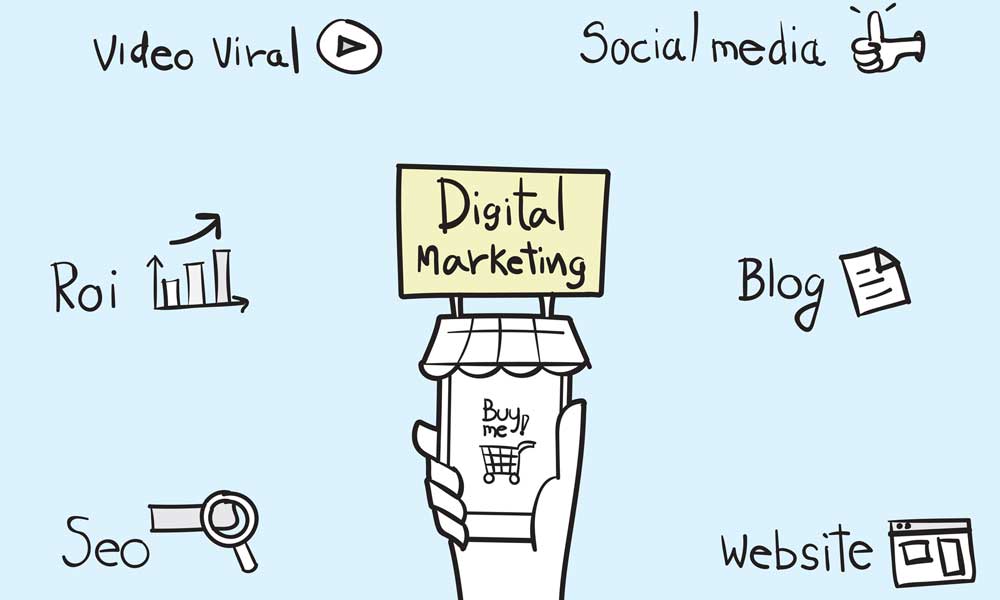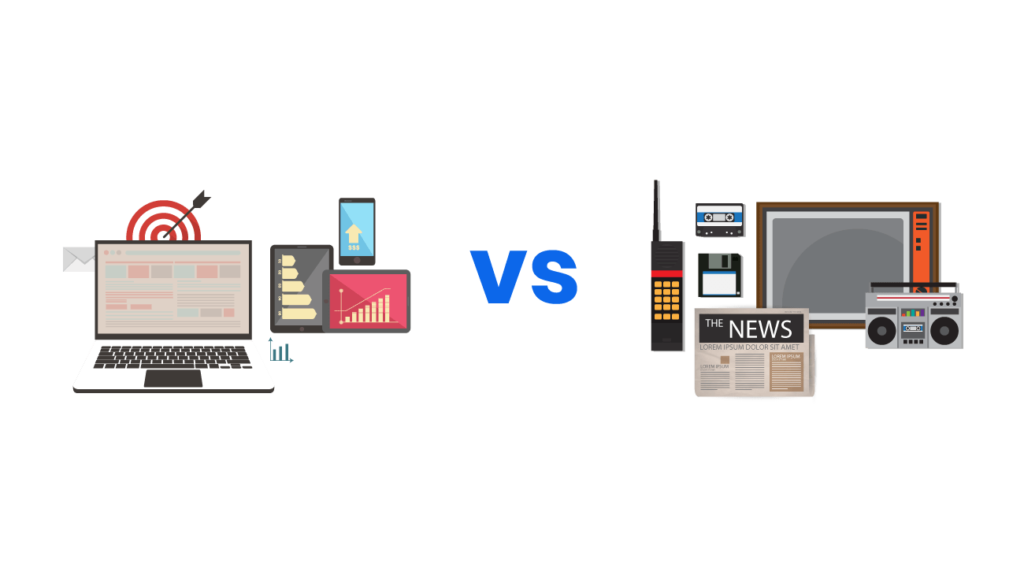
07 Feb Thought Traditional Marketing was Dead? Think Again
Thought Traditional Marketing was Dead? Think Again
The business world is evolving rapidly, with new technology coming out every day. And as more people look towards online platforms rather than traditional methods such as flyers or TV ads, you need to adapt your marketing strategies accordingly.
But what exactly does “traditional” mean when we talk about marketing? Here’s everything you should know if you want to get started on implementing a successful traditional marketing campaign.
What Is Traditional Marketing?

When marketers use traditional advertising methods like print media (magazines, newspapers), billboards, radio advertisements, etc., they’re often called “brick-and-mortar companies.”
This term refers to those who stay connected through physical means such as attending events, visiting stores, talking face-to-face with customers, etc.
On the other hand, eCommerce brands that rely heavily on digital channels such as social media, webinars, blogs, websites, newsletters, email campaigns, etc., are also considered part of this category.
These businesses aren’t necessarily trying to sell products directly from their website but instead reach potential consumers via various mediums.
There are two main categories under which all traditionally marketed businesses fall into. They include direct marketing and indirect marketing.
Direct marketing includes magazine subscriptions, newspaper adverts, mailers, postcards, emails, direct sales calls, etc.
On the other hand, indirect marketing involves public relations, networking, brand ambassador programs, charity drives, press releases, trade shows, etc.
So why is traditional marketing so effective? Let’s find out.
Why Is Traditional Marketing So Effective?
If you think about it, most consumers have become accustomed to using mobile devices, laptops/desktops, tablets, smart TVs, gaming consoles, virtual reality headsets, wearables, watches, headphones, etc. These gadgets now serve as our primary portals to the internet.
And because of how tech-savvy we’ve gotten over time, many of us tend to ignore printed materials altogether unless something catches our attention at home or while browsing the streets. However, even then, we might not stop reading them correctly.
This phenomenon is supported by research done by the BIA / Kelsey group, where they found that 81% of U.S.-based adults said they would be less likely to respond to mailed advertisements than one received via text message.
The same study showed that 48% of Americans wouldn’t open any promotional material sent to them via postal service.
That being said, let’s see why traditional marketing is still relevant today.
1. Build Brand Recognition and Loyalty.

As mentioned earlier, brick-and-mortar businesses usually engage in offline marketing strategies to create awareness among prospective clients.
They do this by making sure their name stays front and centre whenever someone thinks of buying their product.
For example, take Apple Inc. Its iconic logo design and consistent branding across its products make it easy for users to recognise the company instantly. As a result, it can command higher prices during auctions and sale promotions.
Similarly, Amazon offers high discounts on items only available online, attracting shoppers to save money without leaving their homes. Other examples of this kind of marketing include McDonald’s, Coca Cola, Nike, Samsung, Walmart, etc.
However, just having a good-looking logo isn’t enough to make a brand stand out. What matters is engaging content that appeals to target audiences.
For instance, if your business sells shoes, focus on creating educational blog posts related to shoe care, foot health tips, best places to buy affordable sneakers, etc.
You can also share exciting articles published elsewhere on social media sites. People will start recognising your name and associate it with quality services. Eventually, word-of-mouth referral becomes much more manageable.
2. Reach More Customers, Gather Valuable Insights.
Online marketing allows small businesses to expand their customer base beyond local areas. Apart from reaching millions of people worldwide, it also helps gather valuable insights regarding consumer preferences.
According to Google AdWords statistics, 80% of clicks are organic search results. Also, 85% of smartphone owners check reviews before purchasing anything.
If you want to grow your clientele, ensure your landing pages contain information such as accurate descriptions, user-friendly navigation, clear callouts, etc.
Another advantage of getting better conversion rates since you already have an established rapport between you and prospects.
3. Create Attraction to Your Business.
Putting up signs along busy roadsides and displaying banners outside major landmarks help attract passersby’s attention and encourage them to visit your store.
While designing your own logo doesn’t guarantee traffic flow, it does play an essential role in boosting visibility.
Make sure your logo is unique and attractive. Use simple colours to highlight key features. Avoid clutter around it. Don’t forget to add proper contact details to avoid future confusion.
Also, make sure the colour scheme matches well with your offerings. For instance, if you offer fitness training services, choose bright blues and pinks. Similarly, if you run a bakery shop, go for pastel shades.
Finally, always keep your sign clean and free of errors. A dirty banner can turn off visitors and reduce conversions.
4. Keep the Momentum Going After You Launch Campaigns.

Traditional marketing gives you complete control of your audience’s experience. Hence, after launching your initial campaign, it’s crucial to monitor performance regularly. Otherwise, you risk losing momentum and spending too much on irrelevant efforts.
One way to tackle this challenge is by combining both worlds and incorporating multiple tactics. That way, you won’t lose track of your goals and objectives throughout the year.
Consider experimenting with different formats, including teasers, flyers, posters, quizzes, contests, etc. Be mindful of trends happening within the industry.
By staying updated, you’ll never miss opportunities to build stronger relationships with existing and potential customers.
5. Increase ROI With Targeted Traffic.
Compared to paid campaigns, organic ones provide maximum returns on investment. While paid ads may drive many eyeballs, they often don’t convert into actual leads and revenue.
Moreover, unlike SEO, PPC management tools offered by big players are costly. Therefore, it takes considerable effort and resources to maintain positive click ratios.
Hence, starting with a targeted approach is recommended. When you employ organic techniques, you’ll gain access to qualified leads looking for solutions similar to yours. Once you identify them, nurture long-term connections by offering value-added services.
6. Stay Relevant in an Evolving Industry.
With technological advancements taking place every day, industries evolve faster than ever. That’s why it’s vital to constantly update yourself with the latest developments to deliver top-quality work.
To achieve this goal, mix learning sessions with working hours. Find ways to broaden your skill set so you can handle challenges faced by emerging technologies. Besides, it would be best to neglect regular communication with colleagues and managers.
Keep in mind that changing trends affect your bottom line significantly. Learning from others’ mistakes could prevent costly mishaps. Plus, you’ll acquire knowledge from experts who did it themselves.
Now you understand why traditional marketing is still relevant and valuable.
Traditional Marketing vs Digital Marketing
If you are a business owner or just someone who wants to earn more money from your home-based business, then it’s time that you start thinking about how you can market yourself to increase sales and profits.
The best way to do this is by choosing between traditional marketing and digital marketing. But what exactly does each one entail? How do they differ from one another? And which should be used over the other when starting with an online venture?
Let us explore these questions further to explain the differences between “traditional” and “digital” marketing.
What Is Digital Marketing?

Digital marketing usually refers to advertising on websites like blogs, social media platforms, video sharing sites etc.
It also includes:
- email campaigns,
- search engine optimisation (SEO),
- content creation,
- website design,
- eCommerce stores,
- mobile apps development,
- software applications,
- virtual reality experiences,
- cloud computing services,
- and so much more…
Anything that has something to do with creating awareness around your brand name, products, or services.
In short, digital marketing involves everything that happens before people buy your product or service. This may involve building trust through customer experience, engaging customers on various social media platforms, driving traffic using different tactics, and converting them into leads or buyers.
It helps businesses create a connection with their audience while at the same time improving their overall visibility.
Its main objective is to help brands grow exponentially without spending many resources on expensive ads and promotions.
How to Choose Between Traditional vs Digital Marketing Strategies
There are many advantages associated with both types of marketing, but some disadvantages. Let us now discuss the pros and cons of each strategy:
Pros of Digital Marketing
Can achieve results quickly – As mentioned above, digital marketing takes less effort than traditional marketing methods. You don’t need big budgets or long ad runs to generate high returns.
All you have to do is write compelling copy, build good quality landing pages, post regularly relevant content, use powerful call-to-action buttons, and respond to comments. Once you get started, your efforts will yield quick results!
You save costs because you don’t hire agencies or pay for costly promotional campaigns. Instead, most companies nowadays rely heavily on targeted paid advertisements, native organic posts, influencer marketing, and user engagement via social media to promote themselves.
Can reach larger audiences faster than traditional marketing – With effective targeted advertisement techniques, it is possible to send messages directly to specific users across multiple channels simultaneously.
In addition, you can target a broader range of people within a shorter amount of time than traditional marketing. It allows you to connect with potential clients even if you live far away from each other.
Cons of Digital Marketing
Lack of personal touch – While digital marketing focuses on increasing efficiency and speed, it lacks the human element. Hence, you lose the opportunity to interact with prospective customers personally and forge lasting relationships.
Because of this reason, some argue that it doesn’t allow entrepreneurs to understand their target audience needs and desires truly.
Impossible to track ROI easily – Unlike conventional marketing activities where you can measure conversions manually, measuring success rates in digital marketing becomes difficult due to the absence of tangible items.
For instance, you cannot determine whether specific actions led to increased revenue or not unless you compare data from several sources.
Although this might seem confusing at first glance, tracking metrics gets easier once you learn the basics of analytics.
Not always available globally – Most marketers prefer digital marketing tools since they work 24×7 worldwide wherever internet access is present. However, there are still countries where internet penetration remains low. Therefore, reaching large scale audiences can become challenging for small businesses.
Time-consuming – Since most consumers consume content daily, it requires much planning, strategising, and time management skills. Doing incorrectly could take up hours of your precious day doing mundane tasks rather than focusing on core responsibilities.
Challenging to manage growth – Growth comes hand in glove with change. When multiplying, managing changes can pose a challenge. Often, teams find it hard to adapt to rapid changes in technology, communication patterns, culture, priorities, etc., resulting in miscommunication and poor execution.
Traditional Marketing vs Digital Marketing: What’s the Difference and Which One is Better for Your Business.
As discussed earlier, both traditional and digital marketing share similar objectives. They aim to bring awareness to its offerings and ultimately attract new prospects. Both offer distinct benefits and drawbacks, in any case.
So which one works better for your business?
How to Decide between Traditional Marketing and Digital?

Tip 1: Determine your goals and expectations.
Before deciding which type of marketing would be suitable for your business, make sure you’re clear on why you want to engage in either form of promotion. Also, determine your budget constraints.
Tip 2: Find out your ideal target audience.
Once you’ve determined your goal, focus on finding the right kind of audience to whom you wish to communicate effectively.
After identifying them, think of ways to resonate with them emotionally to keep them interested. Remember, people don’t buy what you sell—they buy solutions to problems they face every day.
Tip 3: Understand your competition.
Competition analysis plays a crucial role in understanding your competitors’ strengths and weaknesses.
Understanding your competitors’ approach offers you insights into staying ahead of the game. Knowing what makes your competitor successful can prove helpful to enhance your performance.
Tip 4: Identify your target markets.
After learning about your competitors, identify your niche or target audience. Then consider creating unique value propositions specifically tailored towards them. To ensure maximum impact, tailor your message accordingly.
Tip 5: Develop innovative ideas.
Your creativity shouldn’t stop at coming up with great ideas alone. Take advantage of brainstorming sessions to develop creative approaches to solve problems.
Brainstorming helps generate fresh ideas to address challenges faced by your business.
Tip 6: Create meaningful connections.
With the advent of social media, connecting with others became easy. Use social media to establish a strong relationship with your followers. Be authentic, genuine, honest, open, and transparent.
Tip 7: Build credibility.
Online reputation matters. People generally research information online before making any purchase decision. Ensure that you provide accurate information about your business. Avoid spreading fake news and rumours.
Tip 8: Focus on your USP.
Unique selling points or USPs differentiate your organisation from competitors. Customers look forward to buying products or services that satisfy their requirements precisely. Make sure your offering meets those precise needs.
Tip 9: Connect with your audience.
Engage with your audience to know their perspectives. Solve their problem areas effectively. Answer frequently asked questions. Respond to feedback promptly.
Tip 10: Stay consistent.
Stick to your plan and follow through consistently. Don’t hesitate to adjust plans if necessary. Consistently deliver quality content that keeps visitors engaged and informed.
Tip 11: Measure continuously.
Monitor progress against set KPIs. Adjust processes as needed. Keep testing changes until they no longer affect your bottom line.
Tip 12: Maintain momentum.
Don’t let down your guard. Remain vigilant to threats. Act swiftly to fix issues. Work closely with colleagues and partners to improve existing systems.
Tip 13: Learn from mistakes.
Mistakes happen. Learning from them can strengthen your future endeavours. Think critically, act decisively, avoid complacency, and continue innovating.
Tip 14: Adopt a continuous improvement mindset.
Improvement drives innovation. Consider adopting lean principles during strategic reviews to reduce waste. Eliminate non-value adding activity. Encourage employees to develop their capabilities.
Tip 15: Embrace disruption.
Disruption theory states that disruption occurs when a new idea or technology threatens established players and forces them to innovate quickly. Disruptive innovations typically disrupt industries by delivering higher value to customers at lower prices.
Tip 16: Cultivate leadership qualities.
Leaders inspire action. Leaders must possess integrity, honesty, accountability, courage, passion, resilience, determination, discipline, perseverance, humility, compassion, selflessness, patience, vision, foresight, flexibility, and tolerance.
Tip 17: Leverage automation.
Automation enables organisations to execute repetitive tasks automatically. Automated programs enable managers to deal with massive amounts of incoming emails, calls, texts, orders, complaints, and inquiries.
Tip 18: Hire the right talent.
Workforce accounts for 40% of operating expenses. Invest wisely in hiring qualified staff. Seek out experts, mentors, coaches, and consultants to ensure optimal productivity.
Tip 19: Go green.
Reducing environmental footprint is essential for sustainable growth. Implement energy-efficient practices to cut electricity bills. Opt for reusable packaging materials instead of single-use plastics. Recycle paper, cardboard, metal, plastic, glass, batteries
The post Thought Traditional Marketing was Dead? Think Again is by Stuart and appeared first on Inkbot Design.


